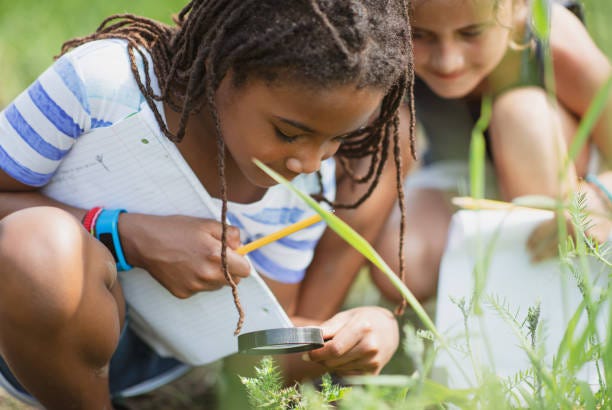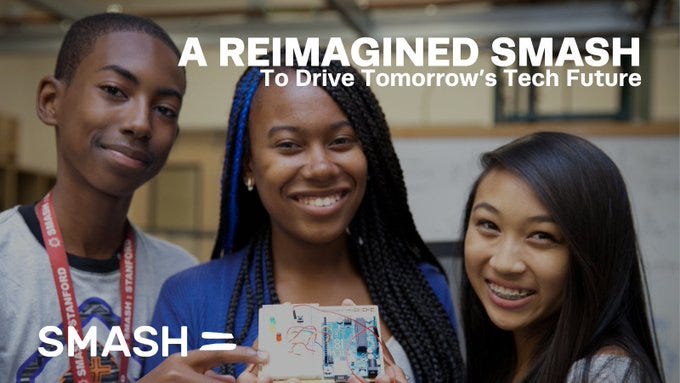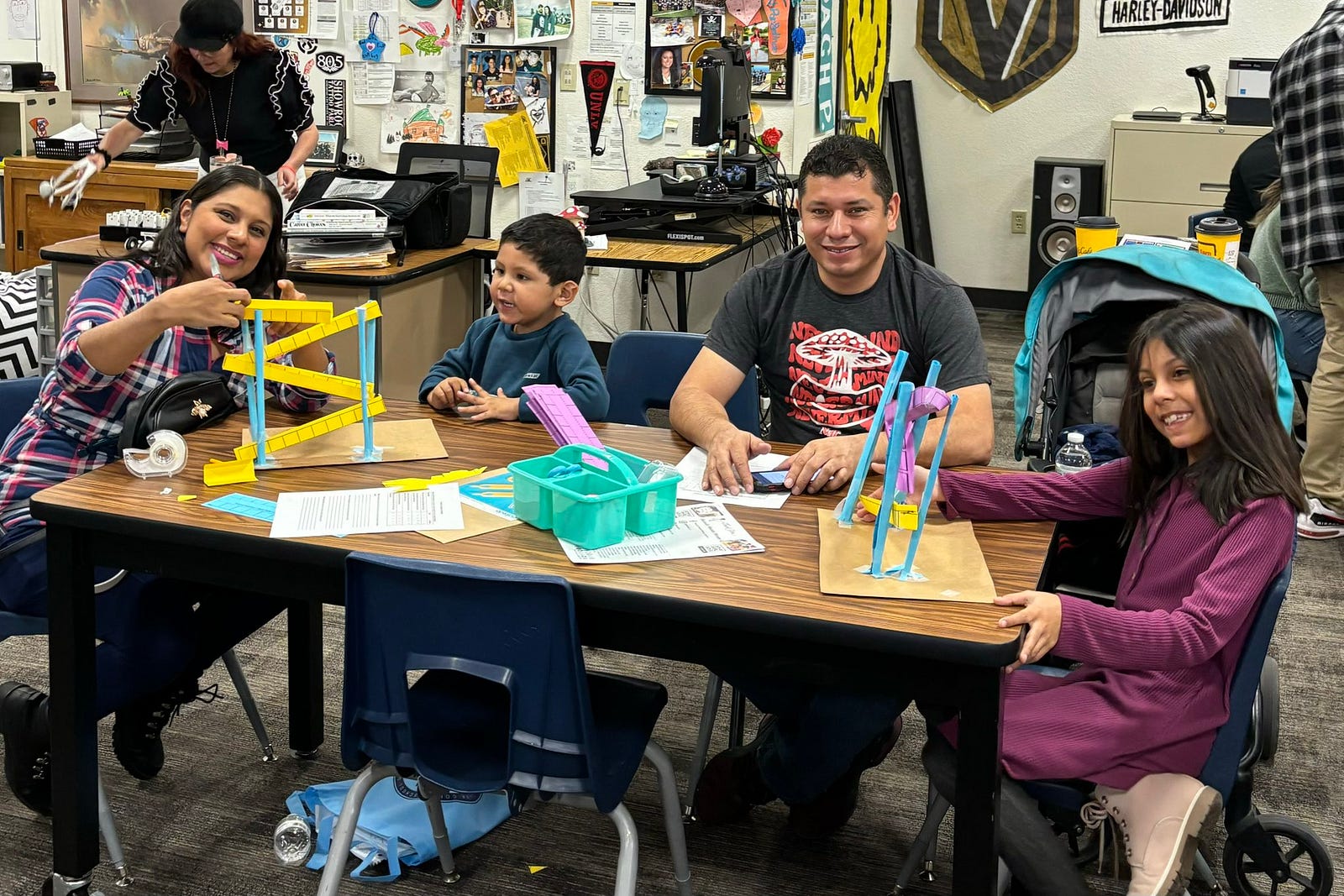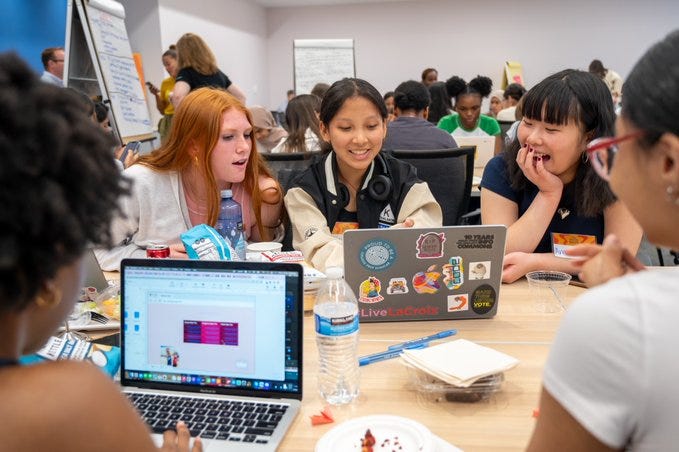Let’s do better than provide kids with random STEM programs. With less structure and more time for self-directed engagement, summer is the perfect time to encourage children’s interests, confidence, and creativity. Summer affords time for the budding astronomer to stay up late and observe the constellations, for the young scientist to explore nature, and for the tech enthusiast to take on a community problem.
STEM Next Opportunity Fund wants every child to have a summer of STEM. Therefore we propose the 2024 Summer STEM Challenge to inspire and empower the next generation of scientists, engineers, technologists, and mathematicians (STEM). This Challenge will:
- Ensure that every child in every family has access to enriching STEM activities and
- Work collectively so that these experiences build a solid foundation and lead to meaningful, lifelong opportunities.
Here are four ideas to get started this summer.
1. Support STEM journeys that build skills, deepen interests, and expand options.
Connect with other local programs and organizations to promote continuous learning across settings. Instead of duplicating efforts with similar coding classes, imagine if organizations coordinated to offer programs that built upon one another to advance skills and sustain interest. Organizations need to know one another to see the duplications and gaps in STEM programs in their communities. They need to know their youth to understand what they need to take the next steps and pursue activities with new programs — in new places and with new people.
STEM Next understands that continuous engagement rather than one-time opportunities are needed to nurture the interest and motivation necessary to pursue STEM pathways long term. In support of this approach, the Millions Girls Moonshot has invested in STEM Pathways to support transitions and handoffs that remove barriers for youth by connecting STEM learning across ages and settings, ensuring interest and motivation persist. This work is especially important for underrepresented groups like girls, youth of color, and youth from low-income families. In partnership with the Connected Learning Lab at the University of California, Irvine, the Million Girls Moonshot is identifying the strategies that support youth from one STEM out-of-school program to another. These include leveraging a wrap-around model to address the holistic needs of youth, coordinating between in school and out of school, supporting near-peer mentorship, and building relationships with families and youth. To learn more, check out STEM Pathways and Transitions from the Million Girls Moonshot.
There are many factors that affect the ease with which youth can participate in STEM opportunities in the summer. Start with a mindset that prioritizes access and opportunities for families who haven’t engaged in previous STEM events. STEM Next’s blog, Summer of Joy: Six Ideas to Imagine New Possibilities with STEM, shares examples of programs that are getting it right with efforts that welcome families and support STEM pathways.
2. Make a dramatic impact with deep, sustained support.
What if we spark an interest but don’t support youth in building skills, knowledge, and traits to persevere and be successful? We are left with lost potential and missed opportunities.
For decades the Kapor Center has offered SMASH for first-generation, college-bound students traditionally underrepresented in STEM. The program offers tuition-free STEM studies in partnership with universities throughout the country. Students participate in courses to prepare for college success, learn about STEM pathways, and engage in networking events with STEM professionals. They develop their skills and networks and build the confidence to sustain engagement in STEM. The community of peers and support that SMASH provides last a lifetime.
Likewise, the Greene Scholars Program takes a holistic approach and provides year-round, hands-on STEM enrichment, entrepreneurial and leadership experiences, and college application support. Sixty percent of participants go on to STEM majors in college. Notably, family engagement is a core component of the program model. This model has the added benefit of presenting parents with opportunities to develop their own leadership skills. To learn more about the Greene Scholars Program, read our case study, Family Engagement: Taking it to the Next Level.
Lasting impact depends on a long-term vision; success is based on leadership that is committed to aspirational programs and on funders who stay the course. SMASH and the Greene Scholars Program exemplify how to create deep and lasting impact. For decades, they have successfully supported youth who have been historically underrepresented in STEM. Their program models are robust; they build upon lessons learned and sustain strategic partnerships.
3. Elevate family engagement.
Parents are one of the biggest influences on youth interest and persistence in STEM. Empower parents; communicate that their encouragement is what matters most. The most effective family engagement builds upon families’ strengths — their funds of knowledge and desire to support their child — and empowers them with ways that they can readily support their child’s interests. The 2024 Summer STEM Challenge supports connections across summer programs, home, and community. Consider ideas like STEM take-home kits, family passes to museums, and a calendar of STEM events along with gas cards and bus passes to allow families to participate.
This work doesn’t require extra work, just a change in mindset. For example, a lesson can include youth practicing STEM skills by teaching an activity to their families. Conversation starters for STEM activities can offer questions that lead to rich discussions. We love the approach shared by Natacha Meyer in our blog, Family Engagement: The Power of Reflection. Youth Exploring Solutions developed a tip for engaging families in every learning unit, giving caregivers a practice they can do at home. For Natacha, a pivotal realization was the principle that “less is more.” Providing families with a single, impactful resource proves to be more effective than presenting an extensive, potentially overwhelming list of options. Easier for caregivers, easier for educators.
Listen to caregivers to find out what they want for their children this summer. Give youth opportunities to speak up and share their ideas too. Make space to hear about challenges that might make it difficult for families to participate. Provide incentives including meals, childcare, stipends, and gift cards for gas or groceries for caregivers’ participation. Gather feedback at the end of summer to understand how well you put their input into action and how you can improve next time. Especially, consider how well programs create pathways for youth to deepen interests, develop skills, and build a STEM identity that continues over time.
4. Bust stereotypes that hold girls back from STEM opportunities.
Girls might not ask to sign up for a robotics class, and caregivers might not consider an engineering program for their daughter. Let’s change that by reaching out to caregivers and educators. They are pivotal in girls’ participation and retention in STEM; their encouragement can make Summer 2024 a STEM celebration for girls.
Girls Who Code offers summer immersion programs that teach computer science skills through real-world projects in game design, cybersecurity, web development, and artificial intelligence. Girls Who Code supports its alumnae with an online community, advice for interviews and hiring, and access to special events. We would like to see more organizations follow the lead of Girls Who Code and provide long-term support and a pathway for continued engagement.
We couldn’t write about this topic without challenging higher education and STEM companies to step up and make their environments welcoming and fair to women. Thousands of girls participate in STEM programs that ignite their interest. We need to ensure that they don’t get turned away or turned off when they study engineering in college, participate in an internship during college, or take their first job after graduation. Read the State of Girls and Women in STEM by the National Girls Collaborative Project for the progress and the persistent problems for girls and women in STEM. Read System Upgrade conducted by McKinsey & Company in partnership with Pivotal Ventures for a roadmap with policies and practices that retain talent, particularly women and underrepresented groups.
***






